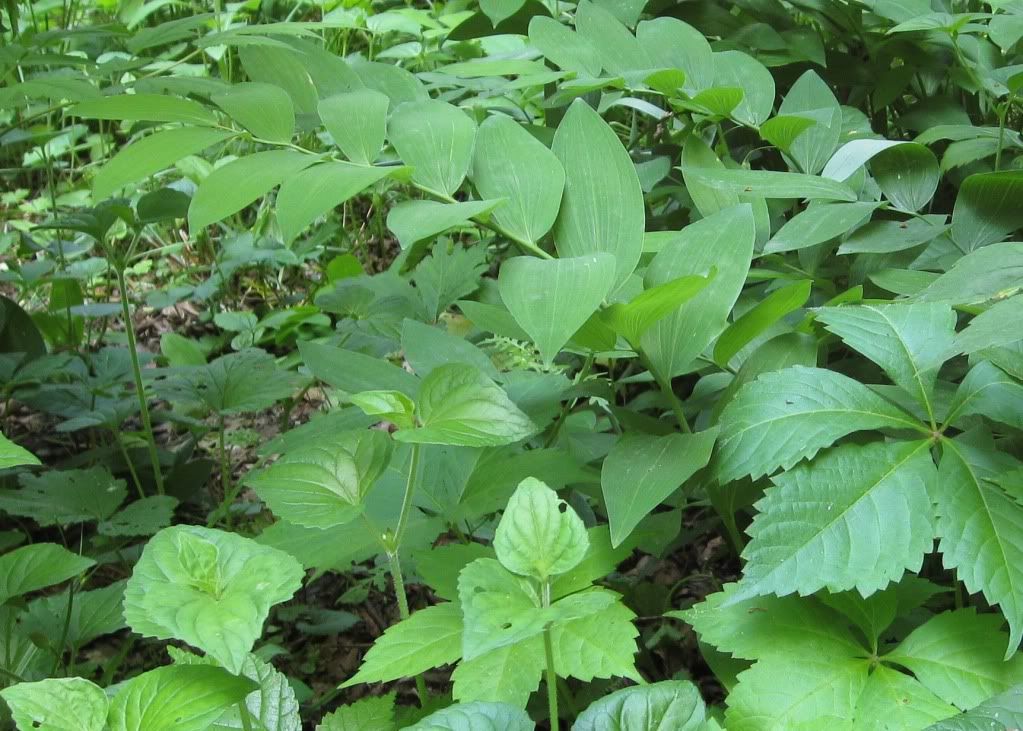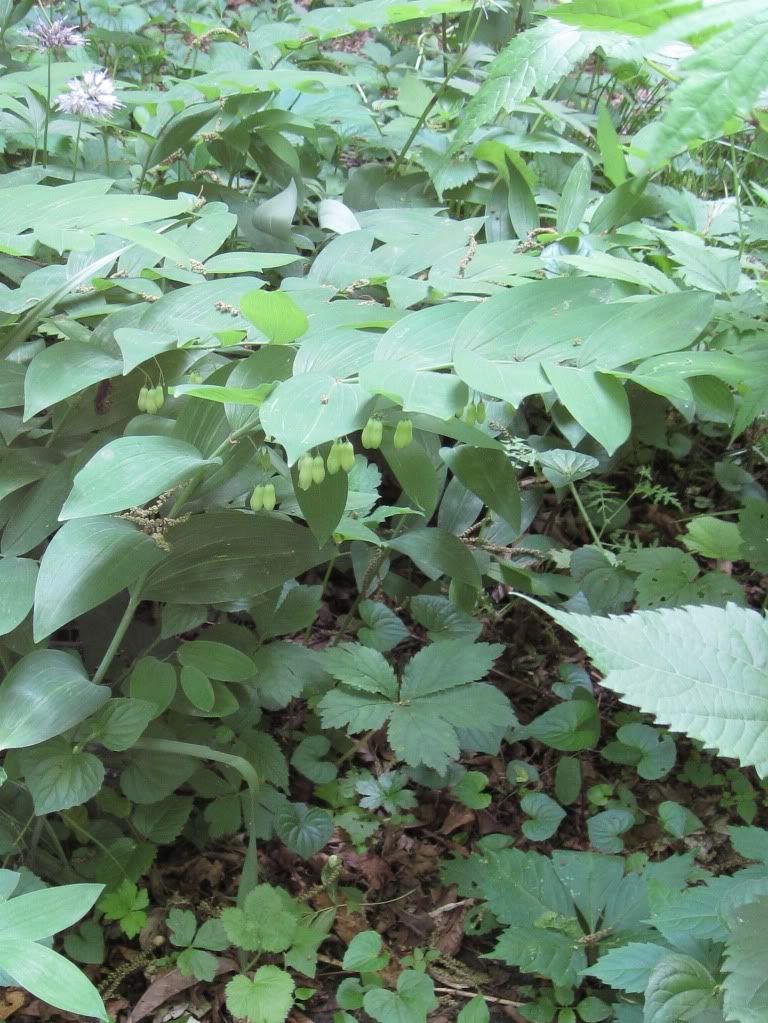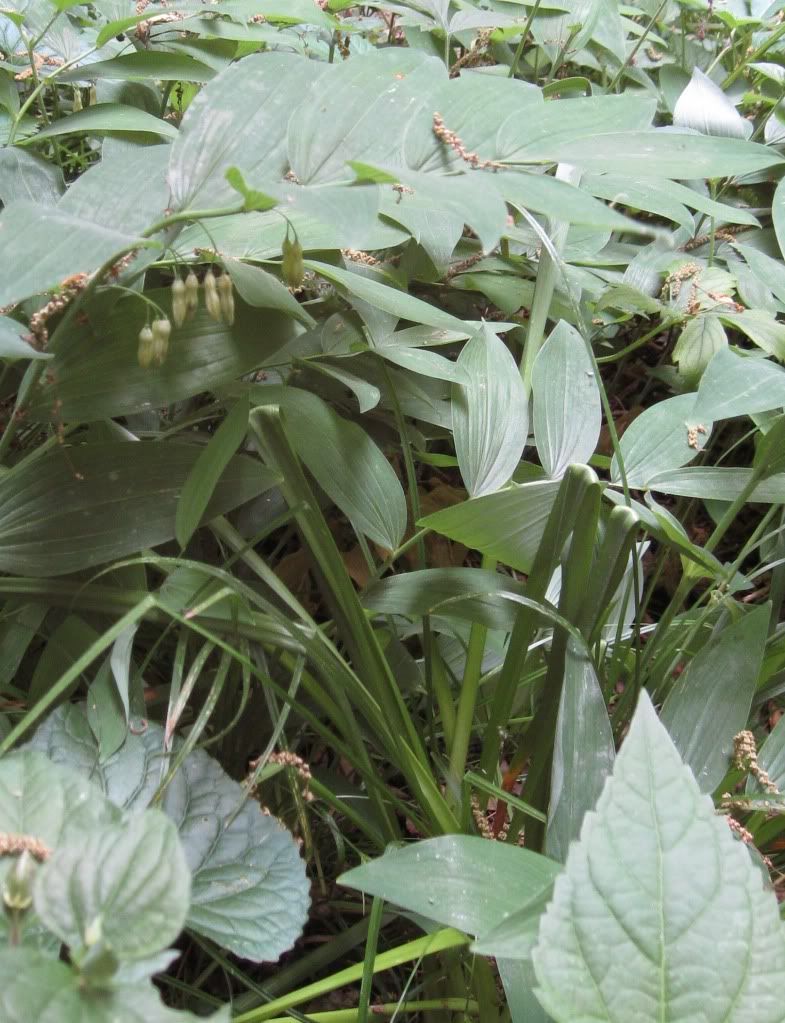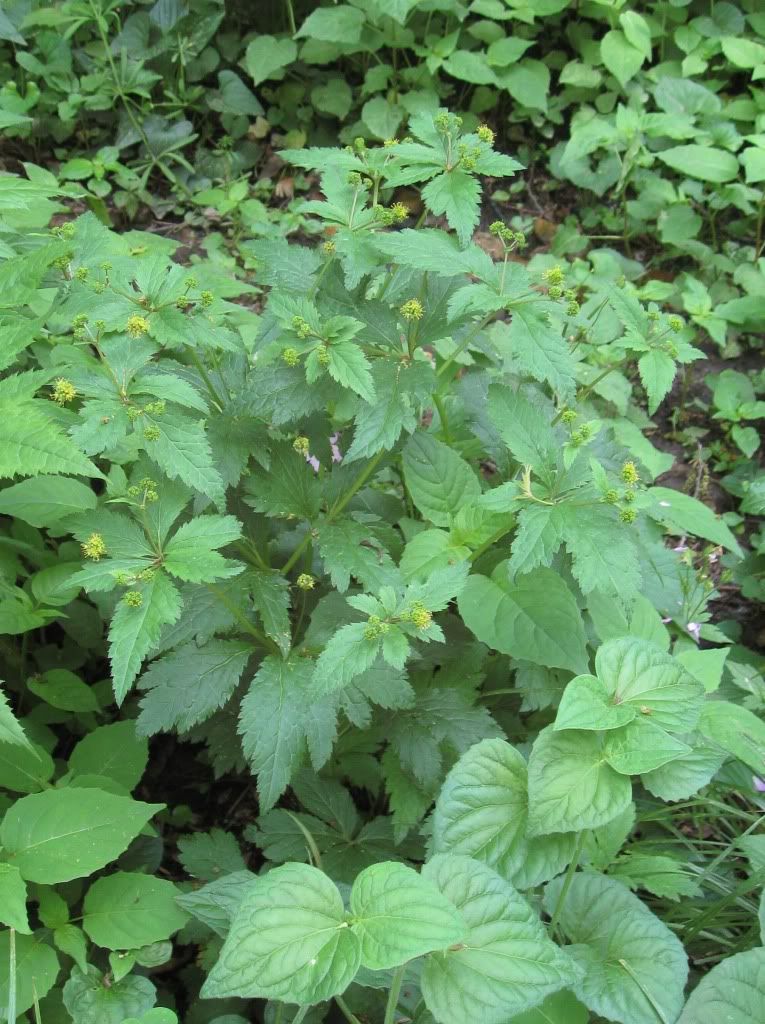Solomon’s seal is a pretty plant with flowers that are easy to miss unless you know where to look. Follow me after the jump for some photos. I also included a picture of the mystery yellow wildflower I mentioned here, which turned out to be Canadian black snakeroot.
This is an open thread: all topics welcome.
The common name of Solomon’s seal has nothing to do with the shape of the flowers. Sylvan Runkel and Alvin Bull write in Wildflowers of Iowa Woodlands,
The thick horizontal perennial rootstock has coarse sparse roots extending from its lower side. On the upper side, it bears scars of previous growth. Since only one stem develops per year, the number of scars reveals the age of the plant.
The scars are a somewhat circular impression believed to resemble the ancient seal of King Solomon. Another version has the name derived from the use of crushed roots to “seal” wounds, especially broken bones.
I haven’t photographed the root scar of Solomon’s seal, but here’s a good picture.
The plant has a distinctive curved shape. When it starts growing, it may look like bellwort at first glance. But bellwort is smaller and develops a bud at the end of the stem. Solomon’s seal stems can be several feet long, with buds that hang down in pairs from where the petiole of each leaf attaches to the stem. You can see some green buds hanging down from the curved plant here:
Later the buds become bell-shaped and pale green flowers. They can bloom in May or June. Here’s a view from a couple of weeks ago. That’s Virginia waterleaf in the upper left-hand corner of the picture.
The bottom of Solomon’s seal flowers usually open up a bit (see the third photo from the top on this page). When I went back later to try to capture this view on my camera, I found that a deer had been munching on the plant.
Native Americans and pioneers used Solomon’s seal roots to treat all kinds of ailments, and many modern-day herbalists swear by it too.
Finally, here’s a bonus photo of that plant I couldn’t identify in the wild geranium diary. You may see its tiny yellow flowers, about a foot or two high, in Iowa woodlands during May or June:
Canadian black snakeroot is common throughout the Midwest, as well as some northeastern states and Ontario, Canada. Strangely, it is in the carrot family. It’s not a bad-looking plant, but later this summer its seeds will be annoying burs that stick to your clothing and/or cover your dog.
Note: the wildflower commonly known as black snakeroot in the U.S. is very different. Bleeding Heartland will feature that plant (also called black cohosh and bugbane) in July.





1 Comment
Solomon's seal can be tough...
…I recently found it on a site that had been mistakenly bulldozed (that’s another story) and it was one of the few plants already recovering. It won’t be bulldozed again.
PrairieFan Mon 8 May 12:48 AM